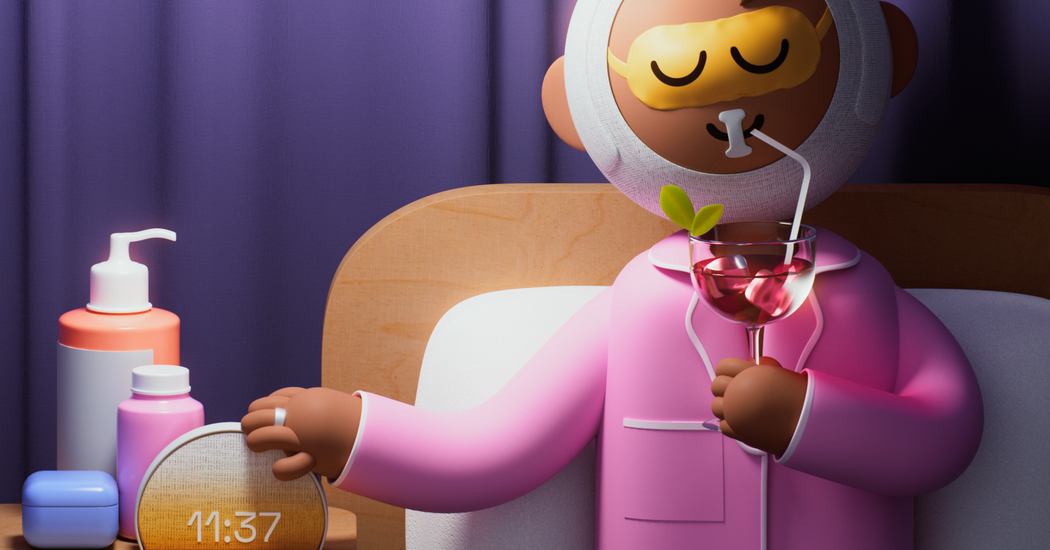Online and off, so-called sleepmaxxers are going to extreme lengths in pursuit of better sleep. Is that a problem?
Derek Antosiek considers himself something of a sleep connoisseur. He has applied tape to his mouth, propped his nostrils open with dilators and sealed his ears with plugs. He has tried out a fan that pumped cool air under his sheets, and positioned separate mattresses for himself and his wife side by side so that her movements wouldn’t disturb him. He has tested light therapy lamps and air quality monitors and sleep trackers and blue light glasses.
With each new experiment, the goal was the same: getting closer to a perfect night’s sleep.
After decades of Americans abiding by the mantra that they can sleep when they’re dead, many have woken up to the importance of a good night’s rest. Overall sleep time has increased over the past two decades, and even more over the last few years, according to the federal government’s annual survey of how Americans use their time.
“The tide is changing,” said Matthew Walker, a professor of neuroscience and psychology at the University of California, Berkeley, and the director of a sleep center at the school. “People — especially Gen Z — have reclaimed their right to a full night of sleep, and they have done that without embarrassment.”
Even though sleep attitudes have shifted, experts say the basic recommendations have stayed the same: at least seven hours, at around the same time, with as few interruptions as possible. What’s different is the number of people for whom sleep has become a fixation. Online, such people — sometimes referred to as “sleepmaxxers” — proudly display the extreme lengths they will go to in pursuit of better sleep.
The videos promise solutions to problems that sleepers never knew they had. One enthusiast recommended an adjustable pillow to reduce facial pressure. Another filmed herself waking up with her hair wrapped in a bonnet and wearing a jaw strap, barely able to speak after taping her mouth shut. She then took it all off in what has become known online as a “morning shed.” Bragging about early bedtimes has become as much of a social media flex as documenting a lavish vacation.
These days, for the sleep-curious, there are mouth tapes (meant to promote breathing through the nose), nostril expanders (which ostensibly reduce snoring), nose tapes (for opening nasal passages) and jaw straps (which wrap around the head and keep the mouth firmly shut). There are pillow mists; magnesium foot sprays; and the “sleepy girl mocktail,” a concoction of cherry juice, prebiotic soda and magnesium powder.
@maytexmyers Replying to @Karen Mariana Kovar #morningshed #collagen #collagenmask #koreanskincare #overnightmask #mouthtape #morningroutine #dailyshed #fy #fyp #viralskincare ♬ Fortnight SPED UP – evermoki
